Forward-thinking Carlsbad Aquafarm also diversifies into seaweed to develop vegan products
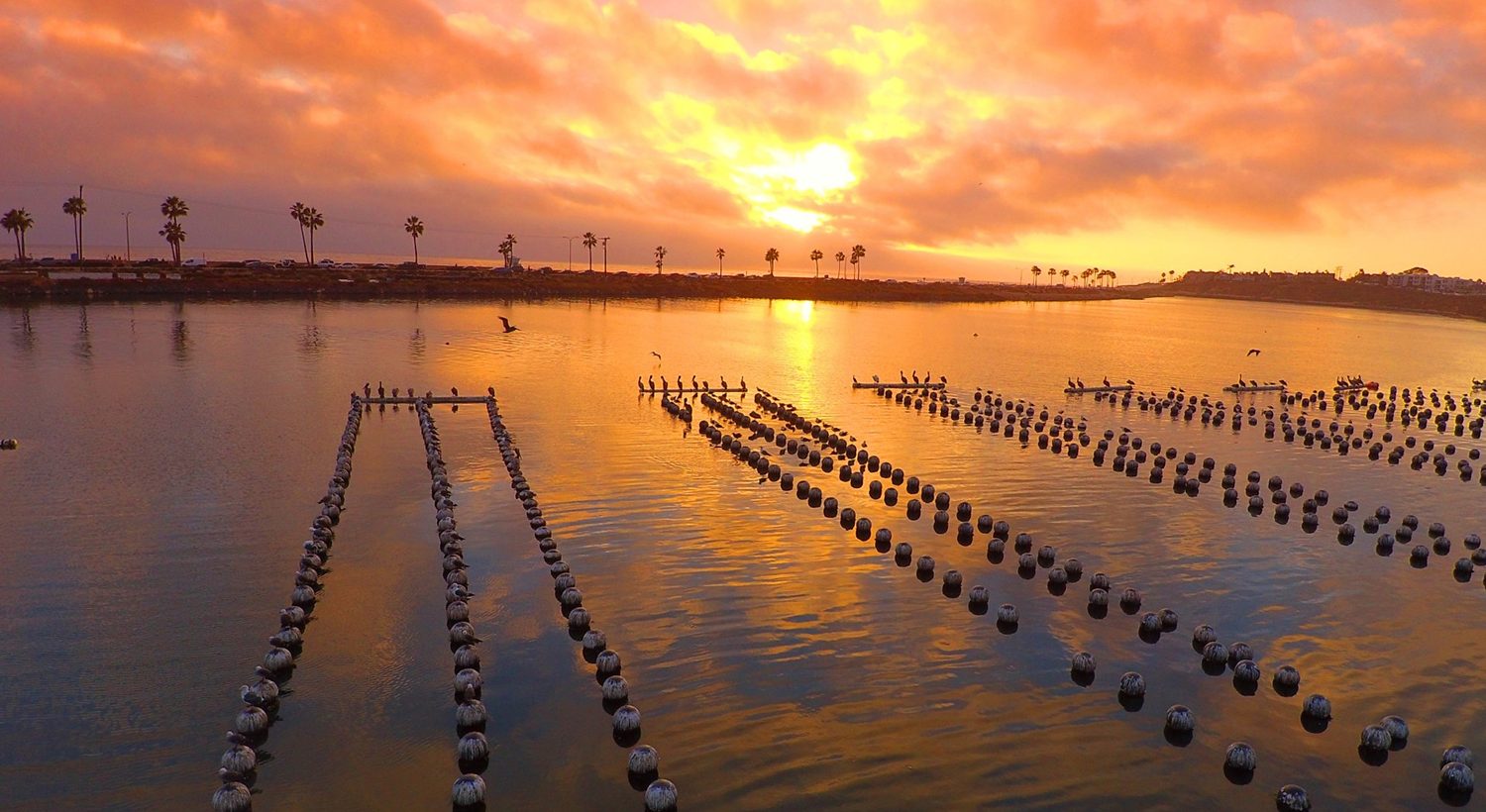
Sitting on the California coast north of San Diego, Carlsbad Aquafarm has been farming oysters and mussels since 1990. Its longevity is impressive, partly because running a successful aquaculture operation in the Golden State can be notoriously difficult.
“There’s a lot of regulatory hurdles that California has that other states don’t have,” said Thomas Grimm, CEO. The permitting process can be challenging and lengthy, he noted.
That observation was echoed in a public commentary by Brandon Barney, co-founder of Primary Ocean. He stated in January that gaining state regulatory agency approval for a seaweed farm took years despite the project being backed by the U.S. government. And a 2019 study from the libertarian Pacific Research Institute found California ranked second to last among states in terms of its business regulatory environment.
In addition to those hurdles, California’s coastal shelf is narrower than those off the U.S. Atlantic and Gulf of Mexico coasts, meaning that prime locations to anchor a sea farm in California are closer to shore. In Southern California, those sites can be in high-traffic shipping lanes – the Port of Long Beach is one of the world’s busiest – or near offshore oil platforms.
“In California, there are a lot of reasons why it’s difficult to do aquaculture,” Grimm concluded.
There are also unique challenges that come with oyster farming in the time of climate change: As the ocean absorbs carbon dioxide at an alarming rate, ocean acidification is transforming marine ecosystems. Shelled animals, like zooplankton, corals, clams, mussels and oysters, cannot grow their shells in the acidic water and the effects are especially severe at the juvenile stages.
But Carlsbad Aquafarm’s SoCal setting gives the company a leg up in developing oysters resistant to climate change, a result of ongoing research that could impact oyster production worldwide. And despite the obstacles, Grimm attributes his company’s success to a commitment to sustainable operations. He notes that the California Coastal Commission voted unanimously in 2019 to approve a Carlsbad Aquafarm permit.
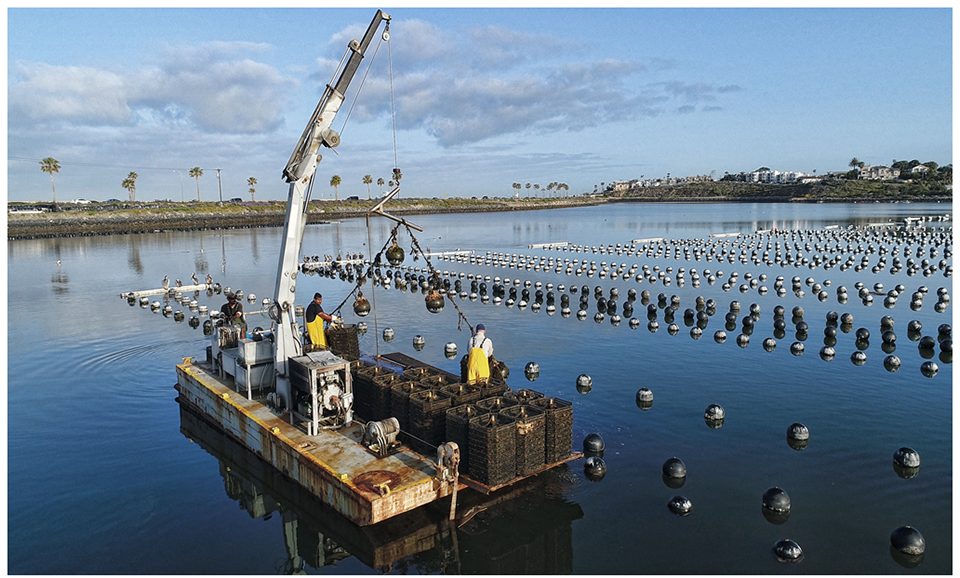
A commitment to doing things right and sustainably plays a role in the innovations Carlsbad Aquafarm is pursuing. One is the raising of oysters more tolerant to the increasing acidity of ocean water brought about by climate change. The oysters are also more resistant to disease and generally hardier than other commercially raised shellfish.
In conjunction with University of Southern California researchers, the project is an aquaculture implementation of a technique used in agriculture: the concept of hybrid vigor. This method involves the in-breeding of specific lines to heighten differences between groups of plants or animals, followed by the crossing of those lines with one another. The crossed off-spring are then crossed again, resulting in a hybrid animal or plant more robust than any of the original starting stock. The research project is ongoing but the early results are promising, Grimm indicates.
This hybridization requires raising successive generations, with the time for each generation in the sequence determined by how long it takes to go from a newborn spat to a mature animal. Consequently, there is a premium in having oysters mature quickly.
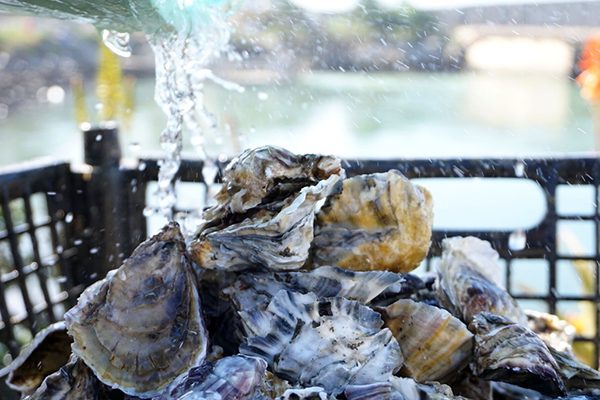
“Pacific oysters most often take two to three years to mature, whereas in Carlsbad, California, it’s less than a year and sometimes as brief as nine months,” Grimm said.
That compressed timeframe arises from several factors, according to Grimm. The water flowing through the lagoon where Carlsbad Aquafarms is located is rich in the calcium carbonate oysters need to build their shells. The water is also nutrient-dense, a result of a high concentration of nearby organic farms and fresh seawater from the adjacent ocean. A third factor is a steady, temperate climate that allows the oysters to grow year-round.
The fast-growing oysters accelerate research into and the eventual production of animals that are better able to withstand a changing climate and its effects, Grimm explained.
“The shellfish that we grow, the stronger and more resilient they are, the better it is for everybody,” Grimm said.
Carlsbad Aquafarms has other innovations brewing, including a seaweed-based source for gummies that’s both vegan and kosher. The generally reddish seaweed species known as Ogo can be processed into gummies that do not come from animals, opening a door to the alternative medicines market. The company was also awarded a U.S. Department of Agriculture grant to explore feeding seaweed to cattle with the goal of disrupting their methane production.
Cows burp out the potent greenhouse gas, and so eliminating methane would help mitigate climate change. Grimm pointed to other diet-change benefits: increased milk production, a higher reproductive rate and higher quality meat. The seaweed that pulls off this feat is difficult to grow, and Carlsbad Aquafarm is investigating alternatives.
These efforts, and others underway to expand operations, fit into the company’s vision of its place in the world. As Grimm said, “Our role as environmental stewards is to ensure the ecological health of the lagoon in which we work.”
Follow the Advocate on Twitter @GSA_Advocate
Now that you've reached the end of the article ...
… please consider supporting GSA’s mission to advance responsible seafood practices through education, advocacy and third-party assurances. The Advocate aims to document the evolution of responsible seafood practices and share the expansive knowledge of our vast network of contributors.
By becoming a Global Seafood Alliance member, you’re ensuring that all of the pre-competitive work we do through member benefits, resources and events can continue. Individual membership costs just $50 a year.
Not a GSA member? Join us.
Author
-

Hank Hogan
Hank Hogan is a freelance writer based in California who covers science and technology. His work has appeared in publications ranging from Boy’s Life to New Scientist.
Tagged With
Related Posts
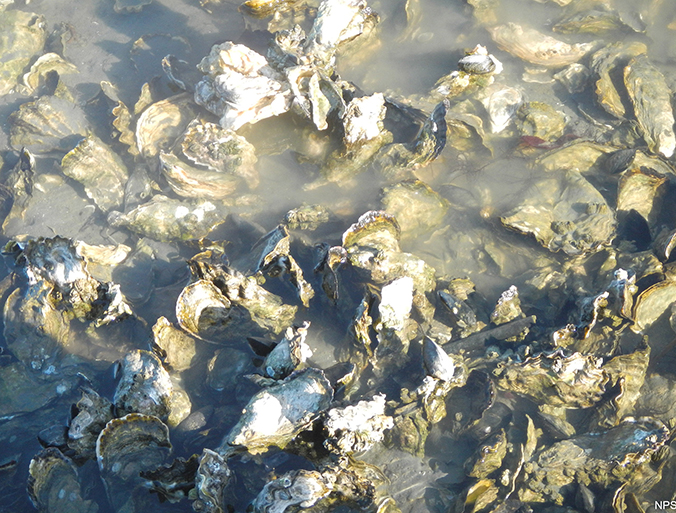
Responsibility
Two years after shutdown, California oyster farm remains a community hot-button
When one of California’s oldest oyster farms was shut down amid reports that it was degrading the environment, local observers took notice. Two years later, the case is still far from closed in the eyes of the farm’s supporters and its critics.
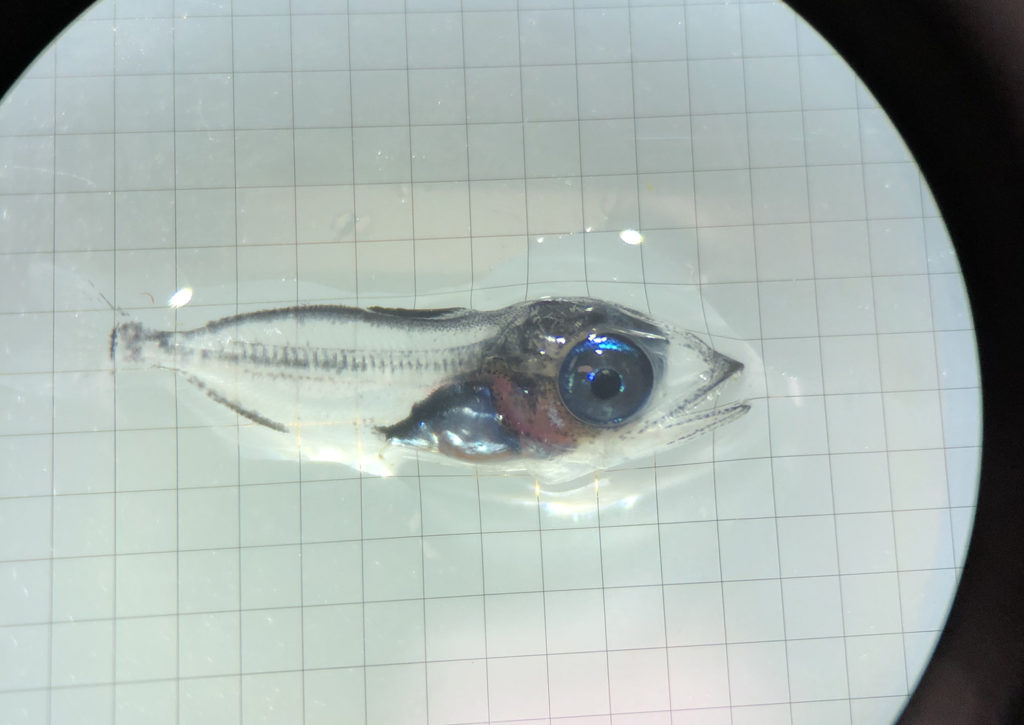
Innovation & Investment
‘Not convinced it can’t be done’: A look inside California’s new bluefin tuna hatchery
San Diego-based bluefin tuna hatchery and feed company Ichthus Unlimited aims to make tuna ranching a more sustainable and reliable option.
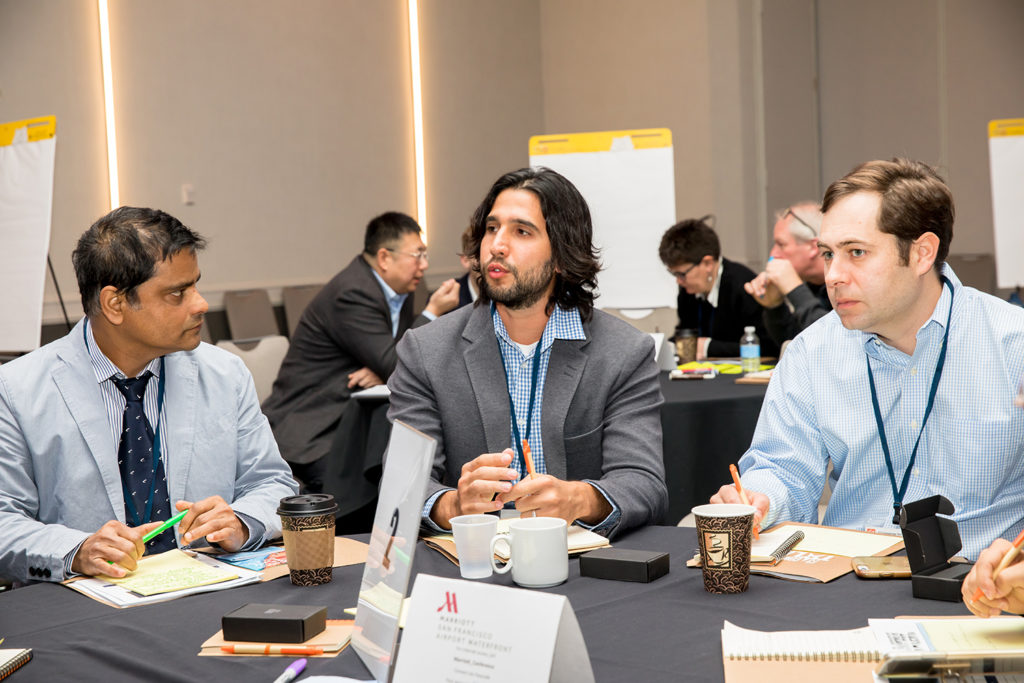
Aquafeeds
Aquafeed moonshots at the F3 ‘talent show’
At the F3 (fish-free feed) Companies Got Talent event in Burlingame, Calif., last week, alternative (non-marine) aquafeed ingredient companies spoke of decoupling aquaculture from fishmeal and fish oil in their quest for greater sustainability.
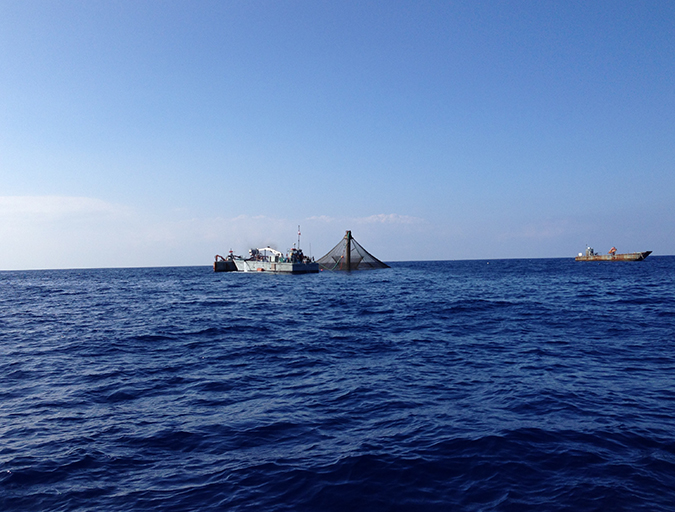
Intelligence
‘Spatiotemporal patterns’ indicate improving perceptions of aquaculture
A study led by University of California Santa Barbara researchers has found that public sentiment toward aquaculture improves over time, a potentially important development with growing interest in offshore aquaculture.


